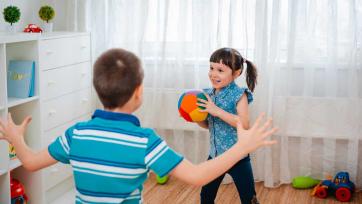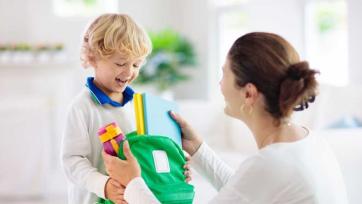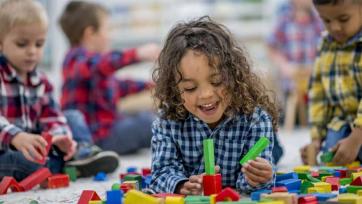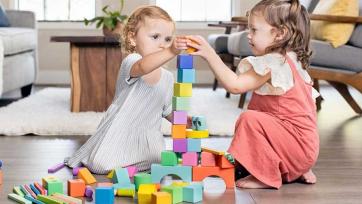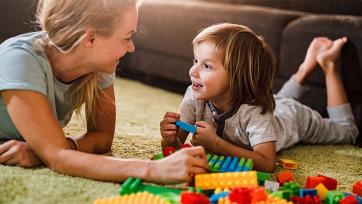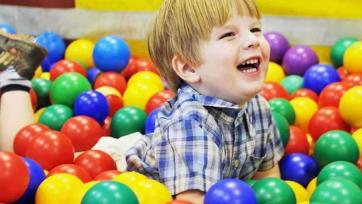Kids love to play, but it's important to know that play isn't just for fun. Children need time to play to grow and develop. Children learn about themselves and how to interact with others by playing. They learn to take turns, be part of a team, work together, and share or hide important information.

Play is complex, has different stages, and can be put into different groups, just like everything else that has to do with human evolution. In this article, we'll talk about eleven important kinds of play for kids' growth.
What is a play?
Play is any activity you do to get pleasure from it. Children need to play because it helps them learn about themselves, get along with others, and solve problems. It helps them calm down and get to know other kids their age. People also think it helps them learn important motor skills such as balancing and helps them focus better.
Why is play so important for your kids' development?
In his book Playful Parenting, Lawrence Cohen explains that play serves three main purposes:
● Play is an important part of learning because it lets kids try to be like adults and learn new skills.
● Play allows a child to get close to and care about his friends and parents.
● Playing helps him deal with his feelings.
Because of this, it is very important to keep your child busy every day. Play is an important part of the school day, particularly for younger kids, because it helps them stay alert.
What Types of Play Are Important for Babies, Toddlers, and Preschoolers?
Whether it's just rolling a ball around or putting on a costume to play a role, the play keeps a child's mind busy and helps them develop their creativity and imagination. Here is a list of 11 activities that help kids grow and learn.
Unused Play
When a child is playing by himself, he does things like wave his hands and kick his legs in the air. Even though these might look like random moves, they are a way to play. Usually, babies and young children play like this.
Benefits:
● Explores movement and learns about the excitement naturally.
● Lays the groundwork for future play activities
Examples:
● Moving hands and feet at random
● Being busy with what seems to be nothing
Parallel Play
Parallel play is when kids one or two years old play next to each other but don't talk much and appear to be doing their things without involving anyone else. During parallel play, kids may watch each other play and adjust their games based on what they see, but they won't try to change their peers' games.
Benefits:
● Learns how to get along with kids his age
● knows about ownership
● Learned how to act.
Examples:
● Using each other's toys
● Putting on costumes and playing roles
● Using the same box to build individual sand castles
Association Play
Associative play is when kids start paying more attention to other kids and less to their toys. Even though it looks like the kids are playing together, there are no set rules, structure, organization, or common goal. This kind of play is common among kids three to four years old.
Benefits:
● More kids hanging out with other kids
● Learns how to obtain ahead with other people
● Language development learns to share
● Learned how to perform together and solve issues.
Examples:
● The same kids are using the same toys.
● Exchanging toys
● talking, or getting in touch with each other
Solitary Play
Usually, kids who are two or three years old play by themselves. During solo play, kids are busy holding toys, lifting, and looking at things. They aren't interested in the other kids around them. Children who are shy or haven't learned how to play with others or with their bodies need time to play alone.
Benefits:
● Learns to be on their own
● He makes up his mind.
● Gives you the confidence to talk to other people.
● Boosts creativity and imagination
● Learns new things on his own.
● Learned to slow down and think.
Examples:
● Acting out a made-up event
● Toys that shake
● Drawing, sketching, or writing
Drama/Fantasy Play
During dramatic play, kids often tell stories about places and people or put themselves in a certain role, which they then act out. This kind of play gets kids to try out different languages and show how they feel.
Benefits:
● Makes people more interested in things outside of themselves. Encourages imagination and creativity.
● Improves problem-solving skills Improves language skills
● teaches people to care about others.
Examples:
● Role-playing
● Talking to dolls
● Caring for and loving stuffed animals
Onlooker Play
Onlooker play is when a child doesn't participate in a game but watches other children play with great interest. Onlooker play is most common in toddlers. It is a way for kids to learn by watching.
Benefits:
● Learn from what it sees.
● Listens and learns to improve language skills.
Example:
● Taking a strong interest in other children's play but not engaging in it.
Competitive Play
Children who play competitive games learn to play with clear rules and ways to win and lose. Football, Ludo, Snakes and Ladders are all competitive games.
Benefits:
● Teaches how to play by the rules
● Teaches himself to wait his turn
● Learns how to work with others
Examples:
● Tabletop games
● Outdoor activities like table tennis, badminton, and racing
Cooperative Play
As kids get older, their social skills improve, and they learn to work together, talk to each other, and play together. Children play cooperatively when they work together to reach a goal.
Benefits:
● Learns to share and get along with his friends.
● Learns how to talk to people
● Learned the value of working as a team, improved at expressing themselves, and gained confidence.
Examples:
● Making sandcastles with each other
Symbolic Play
Symbolic play is when kids use things to act out what they want to do. Symbolic play can happen when you sing, play music, draw, or color.
Benefits:
● Self-expression
● tries out new ideas
● tries things out and learns how to feel
Examples:
● Drawing
● Singing
● Using musical instruments to make music
Physical Play
Play that involves some physical activity is called "physical play."
Benefits:
● Encourages people to be active
● Enhances both gross and fine motor skills.
Examples:
● Bicycle riding
● How to throw a ball
● The game of hide and seek.

